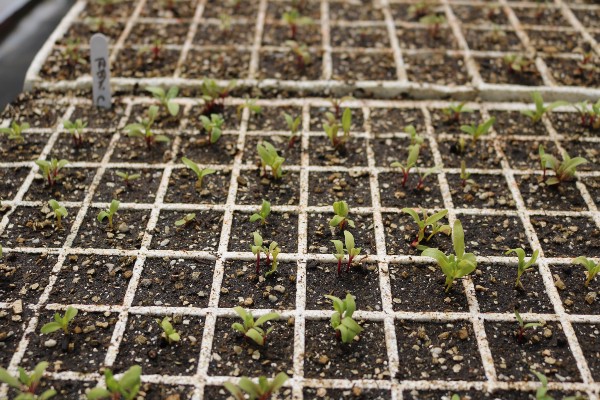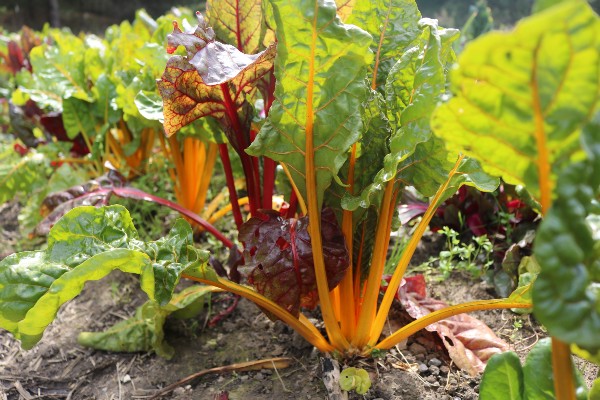Dear friends,
It’s been ten days since I arrived home to Pleasanton from the Zen Buddhist temple Green Gulch Farm. Since returning, I’ve settled into the quiet hum of my parents’ lives: walking with my mom through park wetlands, drinking lavender lattes, helping my dad build a computer from scratch. It’s been a cozy transition from the discipline of life at Green Gulch, and I’m grateful for the temporary sanctuary while I prepare for my next adventure.
And yet I miss the rhythm of the temple. I would wake before dawn to hike from my yurt to the zendo (meditation hall) for sitting, know the sunrise by the light on the zendo walls, nourish my body with grains and stewed apples for breakfast. At 8:30 the community would gather for work meeting and fifteen minutes later, I’d head out with the farm crew to the fields for work. Maybe we’d pull leeks from the kitchen garden or prune the rose geranium bushes; once, we crafted waterways in mud for runoff rain.
At noon, the students would chant Buddhist verses before a quick lunch of warm soup and rustic rye or sourdough. Afterwards, the farmers would truck back to the farm for a final hour of tending to the earth, and then break for free time, which meant showering, resting in the sauna, and bathing in the sun. In the late afternoon, the students would congregate in Cloud Hall for study and one sit before dinner. Dinner was a lively affair, our main opportunity to catch up and share the day’s happenings: perhaps a blue heron sighting, new shiitake mushroom growth, or skinny dipping at the beach.
We’d do dishes, bask in the shadow of eucalyptus trees, and arrive for a final period of sitting before bed. In darkness, we would listen to our thoughts and the mating songs of frogs, and then close the night by singing a Pali rendition of the Buddhist refuges.
Buddham saranam gacchami. Dharmam saranam gacchami. Sangham saranam gacchami.
One of the Zen priests described Green Gulch as a choreographed dance, one that newcomers learn through mimicry and take refuge in over time. Each person in the community has a role: the abbess giving the dharma talk and the guest student mopping the dining room floor both create the beauty of the dance, and one cannot exist without the other.
Over my eleven weeks in residence, I participated in the community as one of 23 practice period students. As students, we dove into the Yogachara, a branch of the Mahayana Buddhist tradition that focuses on studying the mind as the creator of one’s reality.
I practiced with the intention to be intimate with my emotions and thoughts, to let them settle into my body as fully as the deepest breath. Sorrow often arose in my gut, fear in my hands, anger in my chest, humility in rest. Being with emotions in the body without asking them to change was the ritual of healing: to see and to let be suggests that every feeling is worthy of being seen and honored. I discovered my body as a place of homecoming, where every piece of me was and is worthy of love.
I saw through practice that no amount of looking outside of myself — to others for words of comfort or changes in behavior — would heal my sorrow or bring about my joy. And in that same way, I could not expect myself to take away sorrow from others. In fact, I could set boundaries for myself in my interactions with others: I could walk with loved ones without carrying their emotional burdens as my own.
I saw clearly my own longing for partnership and family, both in grieving the end of my past relationship and in strategizing for future ones. I spoke with a Zen priest about this longing for outcomes that cannot be won by sheer effort, and we arrived together at an understanding of faith in the unknown.
This faith in the unknown was cultivated by my work in the sowing shed, the greenhouses, and on the fields of the farm.
We farmers sowed seeds one Thursday in February, and I had no trust that those seeds would become plants. Yet day after day we watered the seeds in the greenhouses, and within two weeks, seeds became sprouts. Later, those sprouts became baby plants, hardy enough to sit outside in the elements. Eventually, those baby plants would be planted into the soil of the earth, and many of them would produce the beautiful leafy greens that would feed an entire community.Some days, we harvested the greens already in the fields, chards and kales and broccolis, and I wondered if other farmers had learned that same lesson: to trust in the mystery of the earth, to commit to the truth of not knowing with one’s full heart, watering and praying and working, with faith that a harvest day would come at long last.
This understanding on the farm settled in my body as I watched seeds sprout and trees that will one day be windbreak rustle as saplings in the wind. Perhaps my longing for family, for commitment to people and place, will give rise to sustenance in time. Until then, faith and patience are the practice.
There are many other topics I explored: What does it mean to be Asian in a mostly white community? How can I practice non-greed and generosity? Where does the tendency to compare myself to others come from, and what are the impacts of comparison? The exploration was rich and vast.
My friends, I am committed to the Buddhist path of practice. I have no doubt that this practice cultivates in me the great bodhisattva aspiration: to hear the cries of the world, and to respond with love and compassion. I carry this aspiration with me: to be a spark of joy and healer of suffering in myself, and to facilitate this transformation for others.
I plan to continue my journey at Plum Village, Thich Nhat Hanh’s monastery in the farmlands of southern France, and then will likely walk the Camino de Santiago in Spain. From Spain, I may farm in Italy, visit Turkey and Egypt, and take the Trans-Siberian railroad through Russia to China and onwards to Japan. Who knows what will come after Plum Village? I am committed to following my heart and letting curiosity be my guide.
Thank you for reading. I’m in the San Francisco area from May 19–28, and would love to say hello before I head out. Let me know if you’d like to share tea or a meal.
May this note find you in peace on your journey.
With love,
Melanie
To follow my adventures to Plum Village and beyond, please feel free to sign up for my newsletter here. I’ll write periodically about mindfulness, social good, tech, and other learnings I find curious or insightful.


